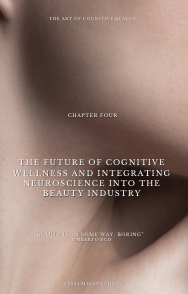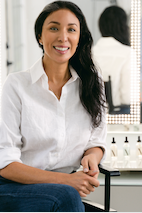The Future of Clean Beauty

Clean beauty is on the tip of every one's tongue and yet a scope of what clean beauty is is yet to be fully defined. As we know it today, clean beauty is defined by a product's safety and sustainability. The deeper roots of clean beauty originate from the practices in green chemistry used to create clean products. These practices have now been applied for years in paints, food and personal care production, and now increasing it's relevance in the massive cosmetics and beauty industries today.
The natural and green living movement must make a necessary shift to prioritize safety, sustainability and efficacy - not just all-natural claims.
From a formulators perspective, clean beauty is that which is designed to provide effective results with the least possible negative impact on consumers and the environment.
Key Industry tenets of Clean Beauty:
-
Minimal ingredients
Consumer safety
Social responsibility
Global ethics
Transparency
Also, from a scientific perspective, there are technical variables and safety concerns that make the demand for natural products a challenge. Let's not forget that many raw ingredients from nature are extremely volatile, allergens in their basic state.
Many raw materials must undergo pasteurization and high standardization to be eligible for use in cosmetics. It's important to know that not all natural ingredients are safe and not all synthetic ingredients are unsafe. Some synthetic ingredients have been specifically created (from natural sources) for people with very sensitive and allergic skins. A simple molecule may be altered to make the whole batch safe. One process is called fractionating - chemically avoiding or removing volatile molecules or known allergens from raw materials so that they may have a longer shelf life, are milder for use, are non allergenic/comedogenic or to have uniformity. The FDA, Canada Health and dozens of global governances and university alliances carefully monitor thousands of cosmetics ingredients every year.
In fact, there are hundreds of regulatory governances, at least one for every country, and dozens of robust global alliances that oversee the continued advancement of cosmetic innovation and improvement, including ingredients specifically for clean beauty.
These governing entities are also responsible for approving new and alternative innovative materials that meet the standards for clean beauty. Such innovations include replacing microbeads with natural texturizers, safe biodegradable synthetics, silicone alternatives and biodegradable fragrance materials. These clean alternative products are used in both the food and cosmetic industries. The future of clean beauty is upon us and you will like what you see.
In order to enforce the necessity and the quality of new and innovative alternatives for clean beauty, a clear and transparent vision of the specific qualities of these clean ingredients are important to educate consumers.
Also in MC2 BLOG

Welcome to The Future of Neuro Beauty
The understanding of Cognitive Beauty opens new possibilities for beauty treatments that go beyond surface-level aesthetics and delve into the underlying neurobiology of beauty and the diverse world of aesthetics.

Your Skin Is A Quantum Communicator
Your skin is a sensory force field, constantly receiving and emitting powerful signals. It’s how you interact with the world and how the world interacts with you.
Your skin is a quantum communicator—it picks up vibrations, temperature changes, even emotional energy from others - Melani Chong

The Skin - Brain Axis - How It works
Melani Chong Neuro Beauty Expert ::: The Skin-Brain Superhighway
Did you know your skin and brain have a hotline to each other? Yep, they're chatting 24/7 through a superhighway of nerves and biochemicals. Stress, mood, and even how well you sleep can affect your glow-up game.
Because understanding this connection gives you the power to take control of your skin's story. Managing stress, sleeping well, and using neurocosmetic ingredients can help keep both your mind and skin in harmony.

